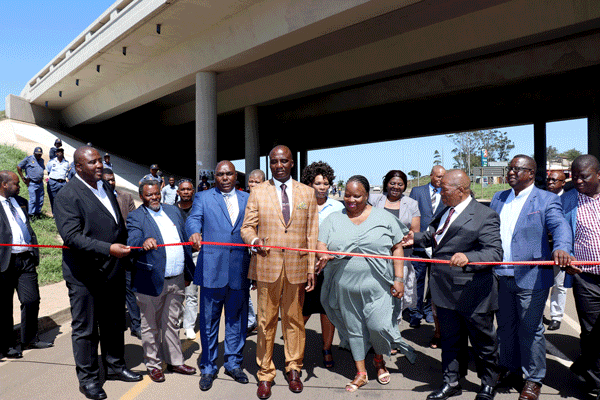
The safety of motorists and pedestrians as well as the preservation of the road surface on the KwaZulu-Natal North Coast has been boosted with the opening of two strategic projects today – a truck weigh bridge and a busy intersection.
Minister of Transport Joe Maswanganyi launched the Eteza Traffic Control Centre and the Kwabhoboza Interchange which were constructed by the South African National Roads Agency (SOC) Limited (SANRAL) at a cost of almost R500-million.
The two SANRAL projects also involved the community through job creation and skills training.
Eteza Traffic Control Centre
The Eteza Traffic Control Centre will help curb extensive overloading of trucks, which has resulted in a marked deterioration in the condition of the province’s road network.
Damage to roads as a result of overloading leads to higher maintenance and repair costs and shortens the life of a road. This in turn places an additional burden on the state as well as law abiding road users, who ultimately carry the costs of careless and inconsiderate overloading.
At the overload control facility at Eteza, heavy vehicles of more than five tons gross mass are weighed. Drivers of heavy vehicles will be issued a fine if the vehicle exceeds the permissible gross mass and/or axle unit mass.
The overload control facility is also used to inspect the roadworthiness of vehicles on a 24-hour basis.
A safer intersection
At Kwabhoboza, the existing intersection was very busy and the high speed of the vehicles travelling on the N2 made the crossing extremely dangerous not only for motorists but also for pedestrians trying to cross at this intersection.
The improvements at the interchange have resulted in improved and safer walkways for pedestrians, improved safety for pedestrians and motorists, and a reduction in accidents.
In addition, taxi lay byes and pedestrian facilities were provided within the interchange precinct. A new pedestrian fence on the road reserve within the KwaMsane community was also installed.
Dumisani Nkabinde, Operations and Maintenance Manager at SANRAL’s Eastern Region said during preparation for the construction of the Kwabhoboza Interchange, the roads agency undertook a transportation study of the function of the N2 within the Mtubatuba region.
N2 problems addressed
A transportation study conducted around 2008/2009 reported that there were between 500 and 700 pedestrians crossing the N2 freeway daily. But they were doing so under unsafe conditions, especially at the point where the new interchange is now built. Several serious and fatal accidents were witnessed weekly.
The report also revealed that due to the poor condition of community roads linking KwaMsane Township and Mtubatuba, motorists and pedestrians were being forced to use the N2 as the access road into town.
SANRAL addressed these road safety problems. The municipality was assisted in the construction of concrete internal collector roads by SMMEs at a cost of R21-million.
SANRAL also rehabilitated other community roads in the area after the community complained about their houses being flooded due to poorly designed existing roads.
Ending Transport Month
The launch of the Eteza Traffic Control Centre and the Kwabhoboza Interchange coincided with the close of October’s Transport Month.
October is known as Transport Month in South Africa, a month during which the Department of Transport advances promotes road safety initiatives while also creating awareness of the economic benefits of the sector.
This year, the successful campaign was under the theme “Together we move South Africa Forward”. Numerous events in villages, towns and cities resulted in a greater understanding of the critical role that transport plays in the lives of our people.
During October, the Department of Transport motivated all stakeholders to reaffirm their commitment to improving the quality of transport facilities, to addressing service delivery backlogs in transport infrastructure, to promoting road safety and to encouraging community dialogue about transport.
Minister Maswanganyi also addressed a community imbizo at the Amangwe Sports Field at KwaMbonambi in KwaZulu-Natal.
Maswanganyi said the government’s investments in rail, roads and public transport were changing the way people accessed their places of work, study and entertainment.
These investments also helped grow the economy and address the challenges of unemployment, poverty and inequality.
“The transport sector is at the heart of the country’s development and it is my duty to ensure that South Africans have safe, reliable, affordable and convenient public transport.

